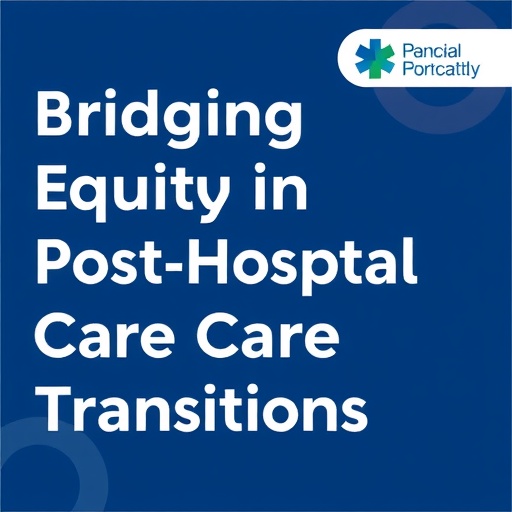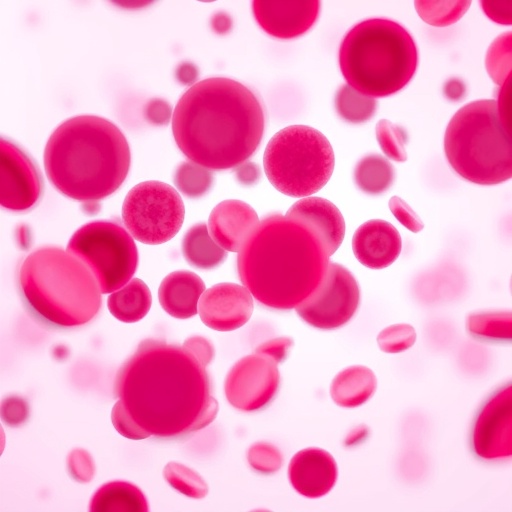As healthcare systems around the globe strive to enhance patient care, a critical focus remains on the transitions from hospital to home. This transitional period is often fraught with challenges, particularly for vulnerable populations. A recent study by Wheeler, Snyder, Nguyen, and others in the Journal of General Internal Medicine sheds light on innovative strategies to bridge the equity gap in post-discharge care. By examining the role of automated post-discharge calls, text messaging, and focused nursing outreach, the research underscores the importance of facilitating smoother transitions for patients returning home after hospitalization.
Transitions from hospital to home can be a precarious phase for many patients. Studies indicate that a significant number of individuals experience difficulties following discharge, such as medication mishaps, misunderstanding care instructions, and heightened anxiety. This can lead not only to poor health outcomes but also to unnecessary readmissions, which place further strain on healthcare resources. The study analyses how technology can be employed to lessen these risks and enhance communication between patients and healthcare providers.
The research highlights the role of automated post-discharge calls, which serve as a critical touchpoint for patients. These calls are designed to assess individual needs, ensure understanding of discharge instructions, and provide a platform for patients to voice concerns. This proactive approach can significantly alleviate patient anxiety, allowing individuals to feel supported as they navigate their recovery at home. By creating a direct line of communication, healthcare providers can identify potential issues before they escalate, significantly reducing the likelihood of readmission.
In addition to automated calls, text messaging emerges as a powerful tool in this study. Text messages can serve various purposes, from medication reminders to educational resources about self-care. The immediacy of text communication aligns well with the needs of today’s patients, who often expect rapid responses. Moreover, the low-cost nature of text messaging and its ubiquitous presence in society make it an ideal fit for reaching diverse patient populations, including those who may be underserved.
The focus on nursing outreach in the study introduces a personalized element to the care transition process. Nurses play an invaluable role in patient education and care management, serving as advocates who ensure that individuals receive tailored support. By following up with patients after discharge, nurses can address specific concerns and reinforce the information given during the hospital stay. This human touch is crucial in establishing trust and ensuring that patients feel empowered to take charge of their health.
As the study progresses, it becomes apparent that traditional models of hospital-to-home transitions may not adequately serve all populations. There remains a notable equity gap wherein certain demographic groups, particularly those from marginalized backgrounds, face more significant barriers to effective care transitions. By employing these innovative approaches, the researchers aim to reduce disparities and promote a more equitable healthcare landscape. This reflects a growing recognition that healthcare should not only be high-quality but also accessible and inclusive.
Patient engagement is a central theme threaded throughout the study. Effective care transitions hinge on the active participation of patients in their health management. Automated communications, whether via phone calls or text messages, are instrumental in fostering this engagement. They not only provide critical information but also encourage individuals to take an active role in their recovery. In a healthcare system increasingly focused on patient-centered care, this shift toward empowering patients is essential for long-term success.
The implications of this research extend beyond individual patient care; they also touch on broader public health initiatives. Reducing hospital readmissions has become a focal point for healthcare policymakers aiming to optimize resource utilization and improve overall health outcomes. As such, the study’s findings may offer a viable framework for designing interventions that address the needs of high-risk populations while also serving to relieve the financial burden on healthcare systems.
For healthcare organizations, implementing automated calls and text messaging represents a strategic investment in patient care. While there may be upfront costs associated with developing these systems, the potential savings from reduced readmission rates and enhanced patient outcomes make a compelling case for adoption. Furthermore, these technologies can be integrated into existing electronic health record (EHR) systems, streamlining workflows and enhancing communication within healthcare teams.
Despite the promising findings, the researchers acknowledge that challenges remain in effectively implementing these strategies. Issues such as patient privacy, technological literacy, and access to communication devices may pose barriers to success. Consequently, it will be essential for healthcare providers to consider these factors when designing their outreach programs. Tailoring approaches to the specific needs and preferences of patient populations can enhance effectiveness and ensure that no one is left behind during the transition process.
The study concludes by calling for further research into these innovative strategies. While initial findings are promising, the need for longitudinal studies to evaluate long-term outcomes is clear. Understanding how automated communications and nursing outreach influence patient experiences over time is crucial for validating the effectiveness of these interventions. Moreover, further exploration into diverse populations will help ensure that programs address the unique challenges faced by various demographic groups.
Ultimately, the efforts to close the equity gap in hospital-to-home transitions represent a transformative approach to healthcare. By leveraging technology and focusing on patient engagement, providers can create a more supportive environment for individuals navigating their recovery journey. As the healthcare landscape continues to evolve, embracing these innovative strategies may prove to be essential in fostering a more equitable and effective system for all.
In summary, Wheeler, Snyder, Nguyen, and colleagues have made significant strides in addressing a critical aspect of patient care: the transition from hospital to home. With their focus on automated communication and personalized nursing outreach, they provide a framework that not only enhances patient support but also works towards closing the equity gap that has long persisted in healthcare systems. This study serves as a vital reminder of the importance of innovation and empathy in delivering quality care, ultimately paving the way for a brighter future in healthcare.
Subject of Research: Hospital-to-home care transitions
Article Title: Closing the Equity Gap in Hospital-to-Home Care Transitions with Automated Post-Discharge Calls, Text Messages, and Focused Nursing Outreach
Article References: Wheeler, M., Snyder, A., Nguyen, O. et al. Closing the Equity Gap in Hospital-to-Home Care Transitions with Automated Post-Discharge Calls, Text Messages, and Focused Nursing Outreach. J GEN INTERN MED (2025). https://doi.org/10.1007/s11606-025-09720-2
Image Credits: AI Generated
DOI: https://doi.org/10.1007/s11606-025-09720-2
Keywords: Hospital discharge, Patient engagement, Health equity, Automated communication, Nursing outreach
Tags: automated post-discharge callsbridging equity in healthcareenhancing patient care transitionshealthcare resource managementimproving health outcomesinnovative strategies in post-discharge carenursing outreach strategiespatient discharge instructionspost-hospital care transitionsreducing readmissions after hospitalizationtechnology in patient communicationvulnerable populations in healthcare





